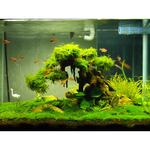brennobonsai
Yamadori
The living part would be a shimpaku!
I know that probably the most recommended would be to use juniper wood or another conifer, but I still wanted to ask. Is it okay to use broadleaf tree wood? even if it is "hard" enough to not rot easily and I use the same care as if it were in a juniper tanuki, such as applying lime sulfur.
sorry for bad english. I'm still learning.
I know that probably the most recommended would be to use juniper wood or another conifer, but I still wanted to ask. Is it okay to use broadleaf tree wood? even if it is "hard" enough to not rot easily and I use the same care as if it were in a juniper tanuki, such as applying lime sulfur.
sorry for bad english. I'm still learning.





